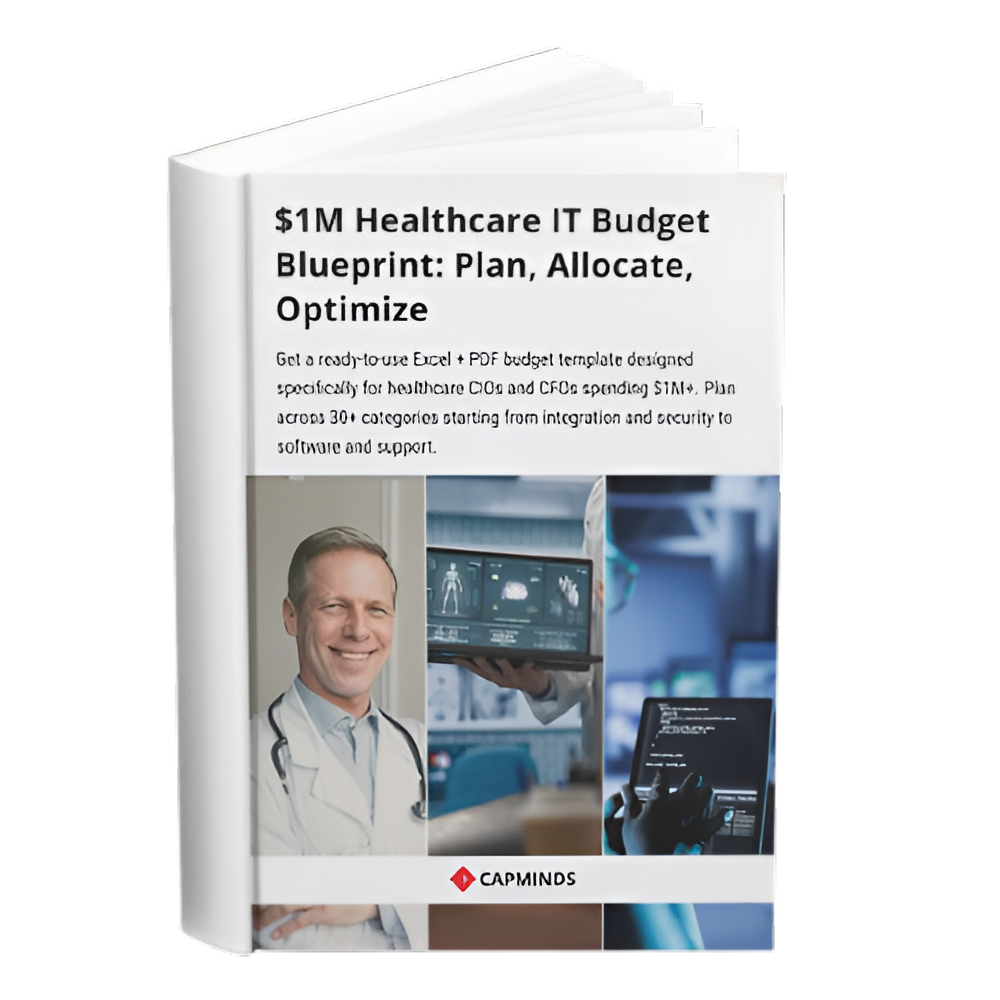Build vs. Buy? Why Custom EHR Systems Are the New Competitive Edge in Healthcare IT
Electronic Health Record (EHR) systems are now standard in U.S. healthcare; about 88% of office-based physicians and 96% of hospitals use a certified EHR. The global EHR market is expanding rapidly (forecasted from $7.4B in 2024 to $11.3B by 2034 at 4.3% CAGR.
Yet many clinicians remain dissatisfied with generic EHRs; only ~27% of physicians report being “very satisfied” with their system. This gap between high adoption and mixed satisfaction highlights the build vs. buy dilemma: should a hospital buy a standard EHR or build a custom solution?
Choosing “build” can be a bold strategic move, offering a competitive edge through tailored workflows, patient engagement, and innovation. Below, we compare off-the-shelf and custom EHRs, citing key data and industry trends to help guide the decision.
The EHR Landscape: Growth, Adoption, and Challenges
- Explosive Growth: The global EHR market is growing steadily. It’s expected to reach $11.3 billion by 2034 (up from $7.4B in 2024). Demand is driven by the digitization of care, telehealth expansion, and COVID-19, prompting remote workflows.
- Widespread Adoption: In the U.S., EHR use is now near-universal. As of 2021, about 88% of office physicians and 96% of acute-care hospitals had a certified EHR. Adoption of basic EHR functions jumped from ~6.6% in 2008 to over 80% by 2015.
- Persistent Dissatisfaction: Despite adoption, many clinicians find EHRs cumbersome. In one national survey, only 27% of physicians were “very satisfied” with their EHR. Common complaints include poor usability, extra clicks, and workflows that don’t match actual practice.
These trends set the stage: with regulatory mandates mostly met, leaders now look for ways to optimize EHR value. Off-the-shelf vendors dominate the market, but custom-built systems promise tighter workflow alignment, better patient engagement, and an IT platform that can adapt and innovate.
The right choice depends on organization size, budget, and strategy. Below, we break down the pros and cons of each approach.
Off-the-Shelf EHR Solutions
Off-the-shelf EHRs are pre-built packages that aim to meet common healthcare needs. They come with extensive features but offer limited flexibility for individual customization. Key points:
Pros of Using a General EHR System
- Quick Deployment: Ready-made systems can be installed and configured faster, enabling organizations to modernize processes more quickly.
- Lower Upfront Cost: Initial licensing or subscription fees are often lower than building custom software. Small practices may implement an off-the-shelf EHR for a few hundred thousand dollars, versus $500K+ for a custom build.
- Proven Reliability: These products are widely used and tested. High adoption means stability and peer support, and vendors routinely update them to meet regulations.
- Vendor Support: The EHR provider handles maintenance, security updates, and compliance patches, easing the IT workload.
Cons of Using a General EHR System
- Limited Customization: By design, one-size-fits-all EHRs can’t adapt deeply to every unique workflow. Hospitals or clinics with specialized processes often end up using inefficient workarounds.
- Additional Costs: While the sticker price may be low, add-ons and scaling can be expensive. Many off-the-shelf vendors charge extra for new modules, interface connections, or increasing user counts. License fees or per-user costs recur yearly.
- Workflow Mismatch: Generic templates may not match a hospital’s actual processes. For example, an obstetrics department may not fit a system designed mostly for general medicine. This “all-in-one” approach can slow clinicians down or force poor compromises.
Off-the-shelf EHRs offer speed and familiarity, but can lock an organization into non-optimal processes. For many large or specialized health systems, these limitations become bottlenecks over time.
Custom-Built EHR Systems
Custom EHRs are developed to order for a specific organization. They take longer and cost more to launch, but deliver a system built around your needs. Key considerations include:
Advantages of Custom-Built EHR Systems
Tailored Workflows
A custom EHR is designed from the ground up to match your clinical processes. For instance, order-entry screens, data fields, and alerts can be arranged to fit how your physicians and nurses think, reducing clicks and confusion. Custom rules and forms eliminate many of the workarounds forced by generic systems.
Seamless Integration
By building your system, you can tightly integrate with existing tools. Lab systems, imaging archives, billing software, telehealth platforms, and even third-party apps (via SMART on FHIR APIs) can be made to “speak the same language,” avoiding data gaps.
Specialty Support
Customized solutions can include modules for specialized care (e.g., oncology, mental health, pediatrics) with tailored fields, decision-support, and documentation that off-the-shelf EHRs often lack. This means each department has exactly the screens and workflows it needs.
Scalability and Growth
A custom EHR can be scaled or extended as your organization grows. Whether adding new clinics, user types, or even entirely new services, the system can evolve. You’re not constrained by vendor roadmaps.
Patient Engagement
You control patient-facing features. Custom portals and mobile apps can be branded and adapted to your care model, enabling patients to schedule appointments, view records, message providers, or check in online. These tools boost satisfaction by making care more accessible.
Compliance and Security
Since you built it, you can bake in any security or reporting needs. As regulations change (new privacy laws, coding rules, etc.), your IT team can update the system without a major vendor upgrade. You decide how data is encrypted, who has access, and how audit logs are captured.
Innovation & Competitive Edge
A custom system can incorporate the latest innovations (AI-driven analytics, remote monitoring, personalized decision-support) faster, because you aren’t waiting on a vendor.
Ultimately, having unique workflows and advanced features can differentiate your hospital. “With more efficient processes, better patient care, and improved service offerings, you can build a competitive advantage in a crowded healthcare market,” notes one industry analyst.
Disadvantages of Adopting Custom EHR
- Higher Initial Cost: Custom EHR development requires a substantial investment. Mid-size organizations might spend $500K–$700K or more on implementation. Upfront costs include development, testing, and training. For comparison, small practices often implement off-the-shelf systems for ~$300 K.
- Longer Deployment: Building software takes time. A custom EHR can take many months (or over a year) to design, code, and fully test before go-live. This extended timeline can delay benefits and require careful change management.
- Maintenance Responsibility: After launch, your organization owns maintenance. You’ll need IT staff (in-house or contracted) to handle updates, troubleshoot issues, and ensure ongoing compliance. This requires a commitment of resources (unlike vendor-supported systems).
- Risk of Over-Engineering: There’s a risk of adding too many features. It’s important to focus on core needs; otherwise, the system could become bloated or difficult to use, ironically undermining the efficiency gains.
Related: The Estimated Time & Cost of Developing a Custom EHR/EMR Software from Scratch
Custom EHRs demand more investment and expertise, but they pay back by closely fitting the organization’s needs and enabling continuous innovation.
The Strategic Advantage of Custom EHRs that Drive Innovations in Healthcare IT
1. Tailoring Workflows for Efficiency
At the heart of the build vs. buy decision is workflow alignment. Custom EHRs can be engineered to mirror your clinicians’ day-to-day work. For example, a hospital could design charting screens that match its nurses’ rounding routines, or set up automated order sets for its most common cases. In practice, this means fewer unnecessary clicks and less duplication.
A survey of EHR users found that good usability in entering data and workflow alignment strongly correlated with physician satisfaction. Custom systems often automate routine tasks too: they can pull in lab results automatically, pre-fill patient information, or schedule follow-ups without manual data entry.
One industry analysis notes a custom EHR “can automate time-consuming tasks such as data entry, scheduling, and billing,” freeing staff to focus on patients. This streamlined workflow translates directly into faster charting, shorter patient visits, and higher staff productivity over the long run.
2. Engaging Patients and Providers
Modern healthcare emphasizes patient engagement, and custom EHRs can support this with tailored patient-facing features. By building your solution, you can implement a branded patient portal or mobile app that fits your care model. Patients might, for example, review discharge instructions, refill prescriptions, or video-chat with a specialist, all within one customized platform. These conveniences boost satisfaction and adherence: according to one report, integrating patient portals and messaging “improves patient satisfaction and encourages proactive engagement” in their care.
On the provider side, happier doctors and staff are also an edge. Clinicians given an EHR designed around their needs report less frustration. For instance, embedding decision-support for chronic disease management or automating alerts for critical lab values can help doctors deliver better care with less cognitive load. In short, a well-designed custom EHR can strengthen the patient–provider relationship and improve the overall experience.
3. Interoperability and Data Sharing
One of the biggest challenges with many EHRs is data interoperability. Despite high EHR use, information gaps remain common: a survey found 81% of patients experienced at least one breakdown in information exchange between providers in the past year. Custom EHRs can address this by incorporating modern standards (like HL7 and FHIR) from the start. For example, you can build APIs using SMART on FHIR to connect with labs, imaging centers, pharmacies, or even patient home-monitoring devices.
This means that patient data flows seamlessly between systems, reducing duplicate tests and improving care continuity. Experts note that leveraging FHIR gives organizations a “substantial edge” by allowing apps to securely pull data from various sources. For instance, a custom EHR might integrate with a third-party risk-scoring app via FHIR, enabling real-time alerts on patient deterioration.
Such interoperability not only boosts safety and outcomes but also enables advanced analytics (population health dashboards, AI-based predictions) by aggregating data across the enterprise. Ultimately, better data sharing leads to coordinated care and operational efficiency, key competitive advantages.
4. Compliance, Security, and Reporting
Staying compliant with healthcare regulations (HIPAA, meaningful use/MACRA, state laws, etc.) is mandatory but complex. Custom EHRs can help by building compliance into the design. For example, you can tailor audit logs, access controls, and encryption exactly to your risk profile. And when rules change, a custom system can be updated in-house without waiting for a vendor patch. As one analysis observes, custom systems “can be easily updated to comply with new requirements” (HIPAA changes, billing code updates, privacy laws, etc.) without having to switch platforms or incur large upgrade fees.
Custom EHRs can also include specialized reporting and analytics modules. For example, you might build real-time quality reporting for your key metrics or a command center view of patient flow.
These reporting features can yield actionable insights on length-of-stay, readmission rates, or revenue cycles – data that might be buried or unavailable in standard EHR reports. In short, while off-the-shelf solutions handle baseline compliance, a tailored EHR gives you control to exceed basic requirements and to innovate with custom reporting.
When to Consider a Custom EHR
Custom EHR development is a big decision. As a rule of thumb, consider building your EHR when:
- Unique Workflows or Specialization: Your organization has distinct processes (such as specialized clinics, integrated care models, or telehealth) that off-the-shelf systems cannot accommodate without heavy customization.
- Scale and Growth: You are a large hospital or health system planning rapid growth (new locations, service lines, etc.). Custom systems are highly scalable and can expand with you.
- IT Resources and Budget: You have (or can hire) strong IT staff and a flexible budget. While upfront costs are higher, investing now can reduce long-term license fees and inefficiencies.
- Competitive Differentiation: You want your EHR to be a strategic asset. If your strategy involves innovation (AI, personalized medicine, advanced analytics), a custom platform gives freedom to innovate rather than waiting on a vendor roadmap.
- Regulatory or M&A Factors: You may face unique legal/regulatory needs, or expect to merge/acquire practices with incompatible systems. A custom EHR can bridge disparate systems and data standards.
- User Dissatisfaction: Staff are frustrated with your current EHR’s limitations. If a survey shows poor EHR usability at your organization, building a tailored alternative can improve morale and reduce burnout.
Related: How a Custom EHR Delivers Long-Term ROI for U.S. Healthcare Businesses
Conversely, off-the-shelf solutions often make sense for smaller practices, tight budgets, or when a fast, low-risk deployment is needed. The choice ultimately depends on your organization’s size, specialties, goals, and resources.
Consider a custom EHR if your institution has specialized workflows, a large scale or growth trajectory, in-house IT capability, and a strategic focus on innovation. Otherwise, an off-the-shelf solution with some customization may suffice. In either case, the goal is the same: an EHR that empowers clinicians, engages patients, and drives better care (and a stronger market position) for your organization.
CapMinds Custom EHR Application Development Solution
CapMinds provides a comprehensive solution for creating custom EHR applications that are suited to your healthcare practice’s specific needs.
We are a group of experienced individuals with considerable experience in healthcare technology.
CapMinds’ custom EHR development services meet the unique demands and concerns of healthcare practitioners from various specializations.
- CapMinds develops EHR applications with intuitive interfaces and workflows that align with your practice, ensuring seamless navigation and enhanced efficiency.
- Our solutions include creating robust custom modules for scheduling, patient management, documentation, and reporting, designed to improve operational workflows.
- We also specialize in integrating advanced features such as e-prescriptions, telehealth capabilities, and remote patient monitoring into your custom EHR application.
- Our experts provide end-to-end solutions, including data migration, interoperability, and compliance with healthcare standards like HL7 and FHIR.
- With a focus on security and scalability, our applications are built to support growth while safeguarding sensitive patient data.
Whether you’re looking to build a tailored solution from scratch or need to enhance your current system, CapMinds’ Custom EHR Application Development Solution is your trusted partner.
Contact us today to transform your vision into a fully functional, cost-effective EHR application that empowers your healthcare practice to succeed.




